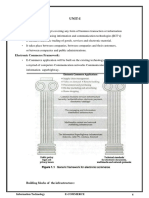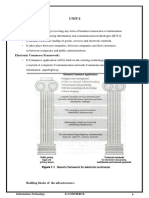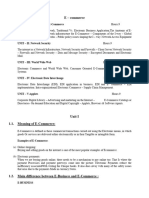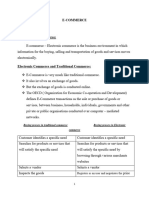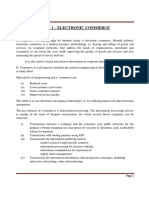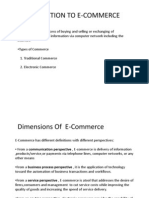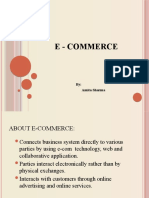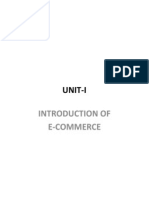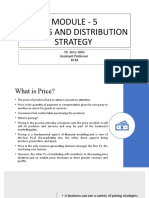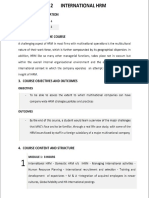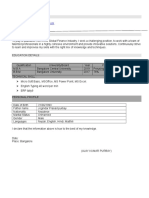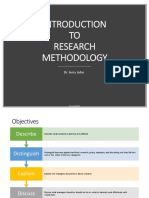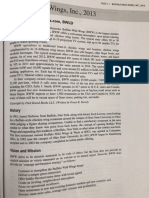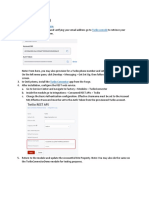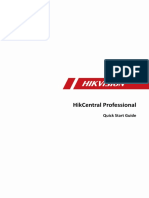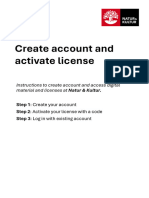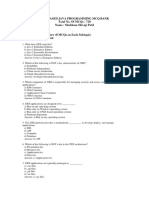0% found this document useful (0 votes)
51 views67 pagesE-Commerce Overview & Applications
Electronic commerce involves the buying and selling of products or services over electronic systems like the Internet. It aims to reduce costs, lower product cycle times, and improve customer service quality. Common e-commerce applications include supply chain management, video on demand, remote banking, online marketing and home shopping. Advantages include faster transactions and broader reach, while disadvantages include inability to inspect products remotely and difficulty calculating return on investment. E-commerce frameworks are built on existing technology infrastructure and rely on common business services, messaging systems, and multimedia publishing infrastructure.
Uploaded by
Dr Jerry JohnCopyright
© © All Rights Reserved
We take content rights seriously. If you suspect this is your content, claim it here.
Available Formats
Download as PDF, TXT or read online on Scribd
0% found this document useful (0 votes)
51 views67 pagesE-Commerce Overview & Applications
Electronic commerce involves the buying and selling of products or services over electronic systems like the Internet. It aims to reduce costs, lower product cycle times, and improve customer service quality. Common e-commerce applications include supply chain management, video on demand, remote banking, online marketing and home shopping. Advantages include faster transactions and broader reach, while disadvantages include inability to inspect products remotely and difficulty calculating return on investment. E-commerce frameworks are built on existing technology infrastructure and rely on common business services, messaging systems, and multimedia publishing infrastructure.
Uploaded by
Dr Jerry JohnCopyright
© © All Rights Reserved
We take content rights seriously. If you suspect this is your content, claim it here.
Available Formats
Download as PDF, TXT or read online on Scribd
/ 67





